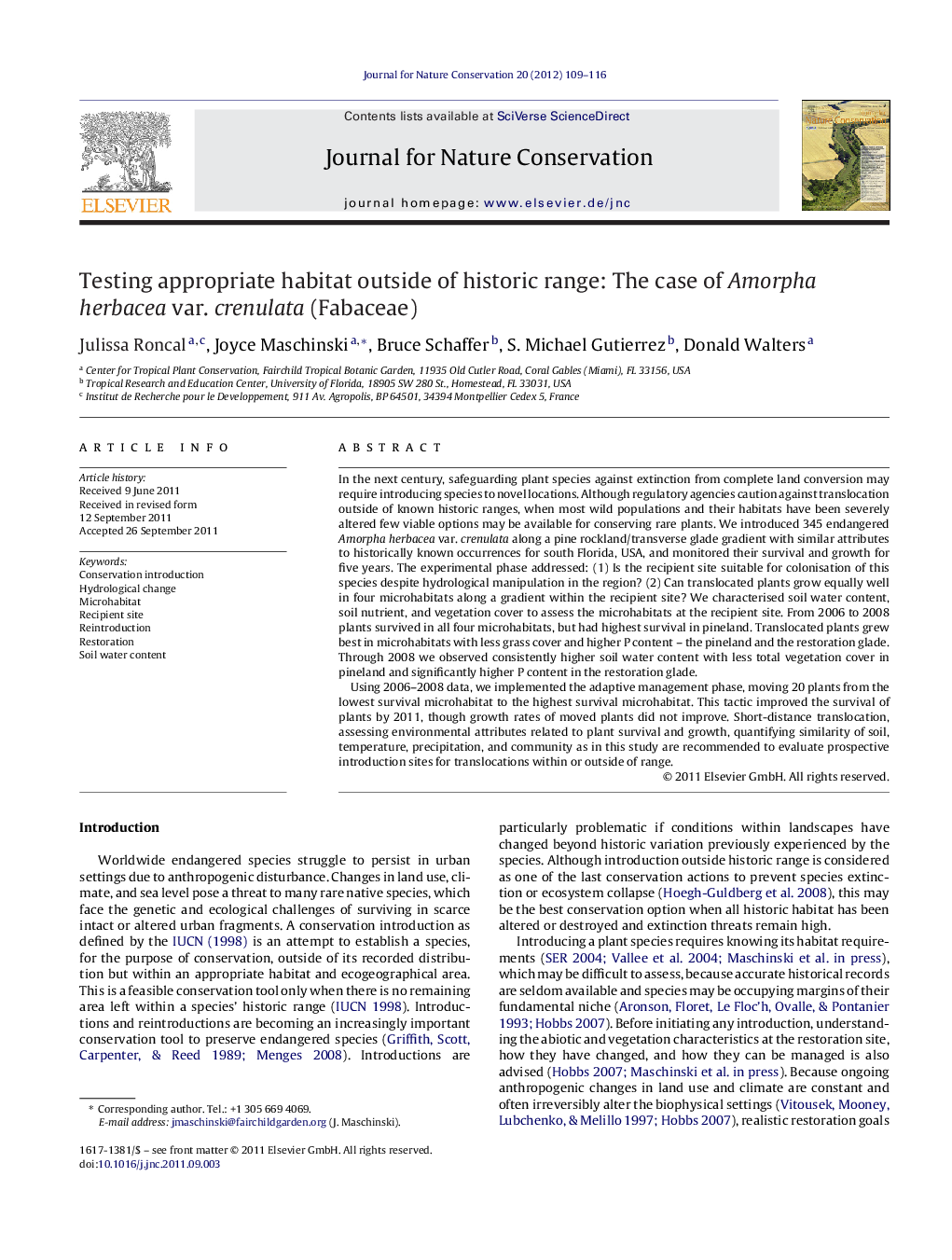| Article ID | Journal | Published Year | Pages | File Type |
|---|---|---|---|---|
| 4399977 | Journal for Nature Conservation | 2012 | 8 Pages |
In the next century, safeguarding plant species against extinction from complete land conversion may require introducing species to novel locations. Although regulatory agencies caution against translocation outside of known historic ranges, when most wild populations and their habitats have been severely altered few viable options may be available for conserving rare plants. We introduced 345 endangered Amorpha herbacea var. crenulata along a pine rockland/transverse glade gradient with similar attributes to historically known occurrences for south Florida, USA, and monitored their survival and growth for five years. The experimental phase addressed: (1) Is the recipient site suitable for colonisation of this species despite hydrological manipulation in the region? (2) Can translocated plants grow equally well in four microhabitats along a gradient within the recipient site? We characterised soil water content, soil nutrient, and vegetation cover to assess the microhabitats at the recipient site. From 2006 to 2008 plants survived in all four microhabitats, but had highest survival in pineland. Translocated plants grew best in microhabitats with less grass cover and higher P content – the pineland and the restoration glade. Through 2008 we observed consistently higher soil water content with less total vegetation cover in pineland and significantly higher P content in the restoration glade.Using 2006–2008 data, we implemented the adaptive management phase, moving 20 plants from the lowest survival microhabitat to the highest survival microhabitat. This tactic improved the survival of plants by 2011, though growth rates of moved plants did not improve. Short-distance translocation, assessing environmental attributes related to plant survival and growth, quantifying similarity of soil, temperature, precipitation, and community as in this study are recommended to evaluate prospective introduction sites for translocations within or outside of range.
